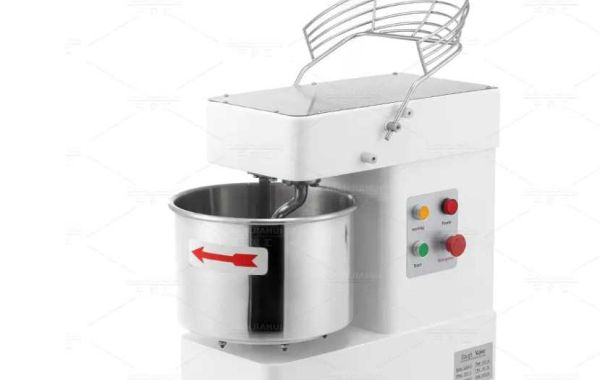In the culinary world, the process of dough preparation is a delicate balance of science and art. The texture, flavor, and overall quality of baked goods are heavily influenced by the dough's temperature during the mixing process. Overheating can lead to a loss of gluten structure, affecting the dough's elasticity and the final product's texture. Fully automatic Dough Mixer is designed to address this challenge, ensuring that dough is mixed efficiently without compromising its temperature integrity.
The importance of temperature control in dough mixing cannot be overstated. Overheating can cause the proteins in the flour to denature, leading to a weak gluten network that fails to trap the gases produced during fermentation. This results in a dense and heavy final product, which is undesirable for most types of bread and pastries. Fully automatic Dough Mixers are engineered with this in mind, incorporating features that help maintain an optimal temperature throughout the mixing process.
One such feature is the use of variable speed settings. By allowing bakers to control the speed at which the dough is mixed, Fully automatic Dough Mixers can prevent the generation of excessive heat through friction. Slow and controlled mixing at the beginning of the process helps to gradually develop the gluten without causing the dough to heat up too quickly. As the dough becomes more elastic and less sticky, the speed can be increased to finish the mixing process efficiently.
Another key aspect of temperature management in Fully automatic Dough Mixers is the use of cooling systems. Some models are equipped with internal cooling mechanisms that help to regulate the temperature of the dough during the mixing process. This is particularly important for recipes that require a longer mixing time, as the prolonged friction between the dough and the mixer's components can lead to overheating.
The design of the mixing bowl also plays a crucial role in preventing dough overheating. Fully automatic Dough Mixers often feature bowls made from materials that have good thermal conductivity, such as stainless steel. This allows for efficient heat transfer, helping to dissipate any excess heat generated during the mixing process. Additionally, the shape and size of the bowl are designed to ensure that the dough is mixed evenly without creating hotspots.
Furthermore, the use of timers in Fully automatic Dough Mixers is another way to avoid dough overheating. By setting a specific mixing time, bakers can ensure that the dough is not overmixed, which can lead to overheating and the breakdown of the gluten structure. This feature allows for precise control over the mixing process, ensuring that the dough reaches the desired consistency without becoming too hot.
In conclusion, Fully automatic Dough Mixers are designed with a multitude of features to prevent dough from overheating during the mixing process. From variable speed settings and cooling systems to thermally conductive bowls and timers, these mixers offer a range of solutions to maintain the optimal temperature for dough preparation. By doing so, they not only ensure the quality of the final baked goods but also contribute to a more efficient and controlled baking process. The careful balance of efficiency and temperature management in Fully automatic Dough Mixers is a testament to the advancements in kitchen technology, providing bakers with the tools they need to create exceptional products while maintaining the highest standards of quality and consistency.







